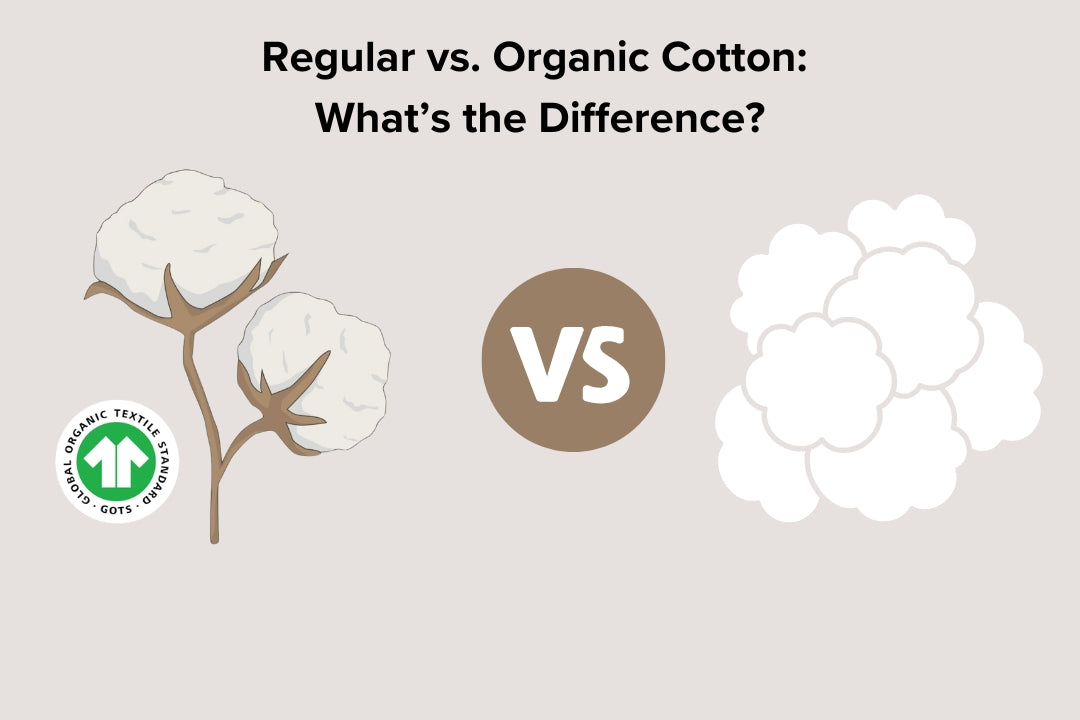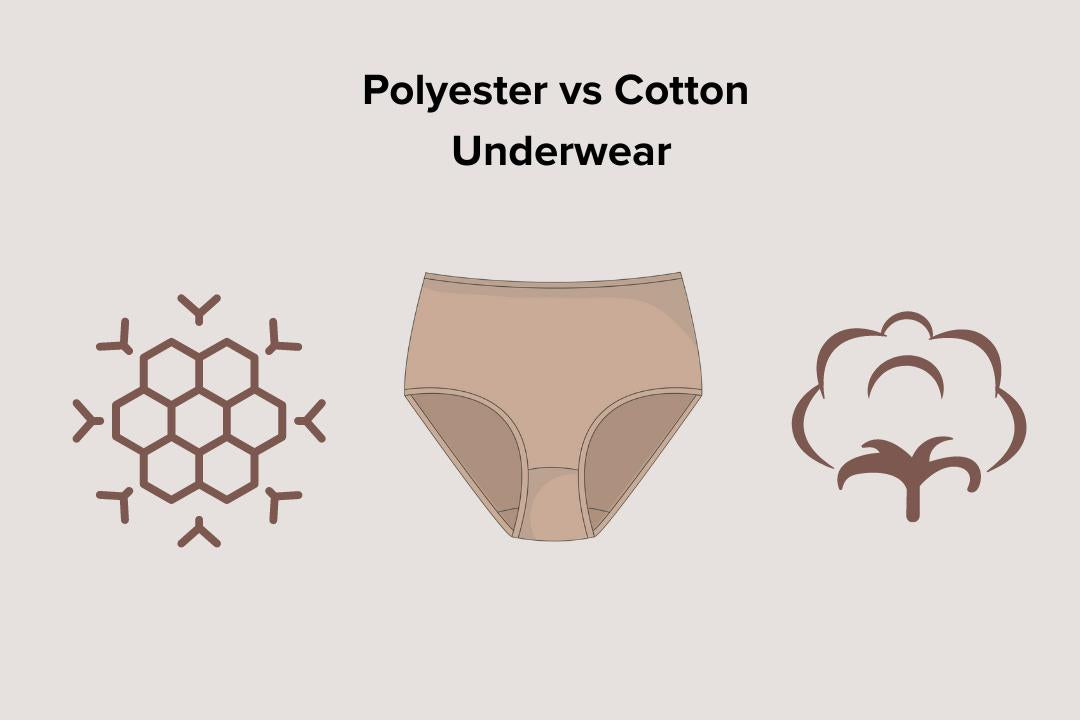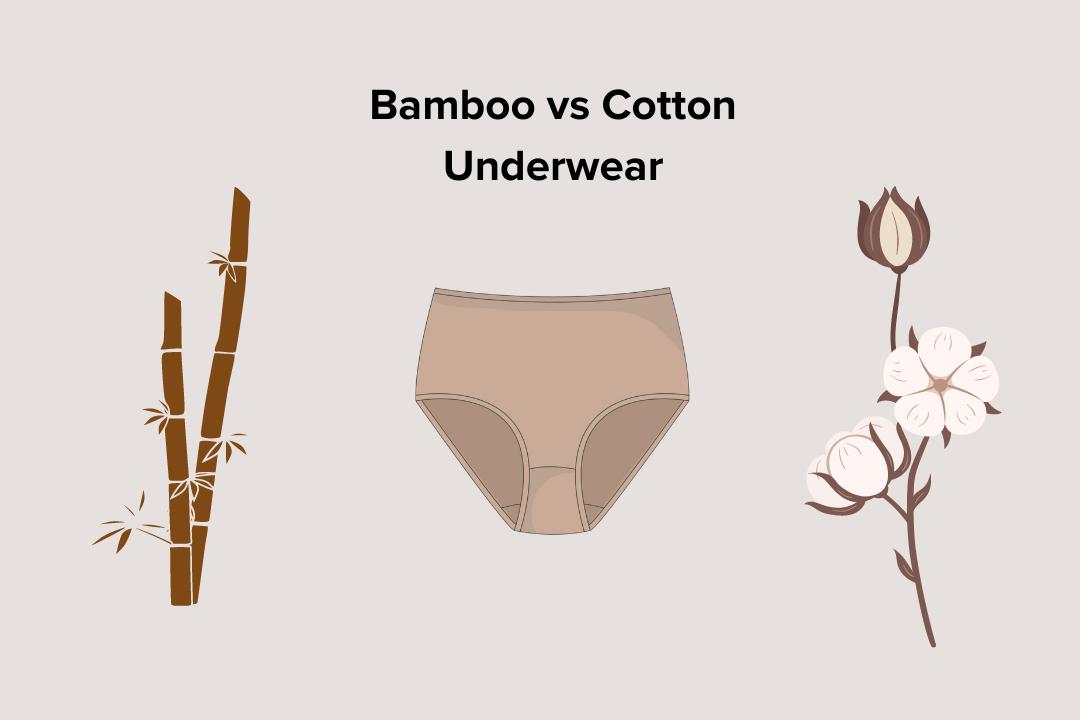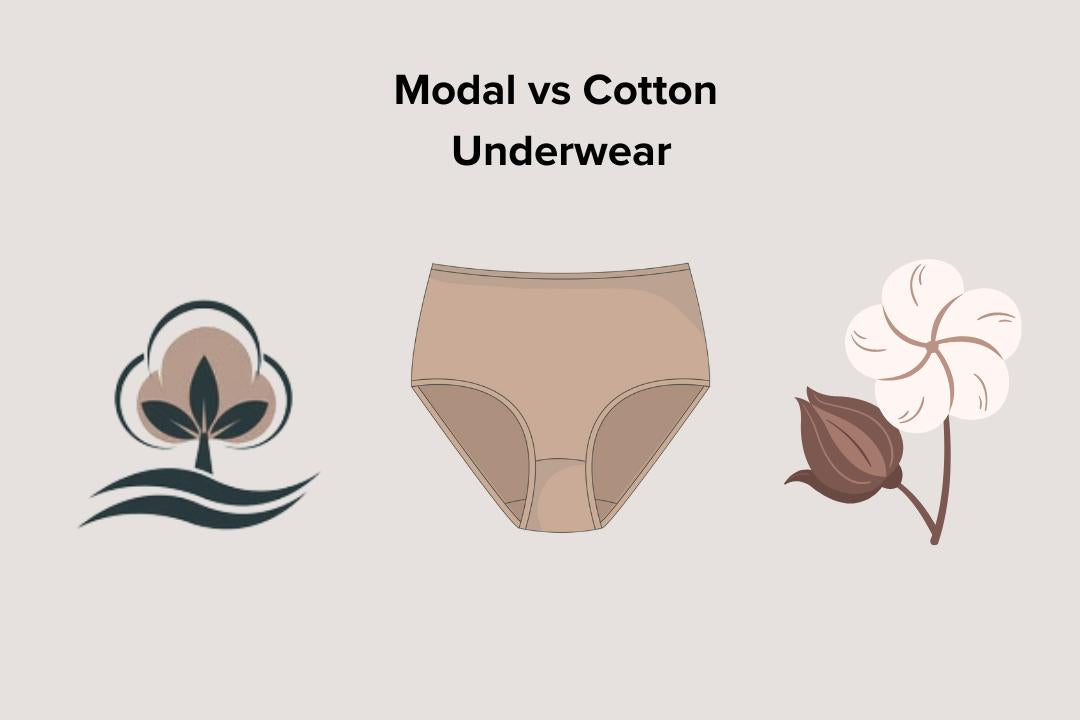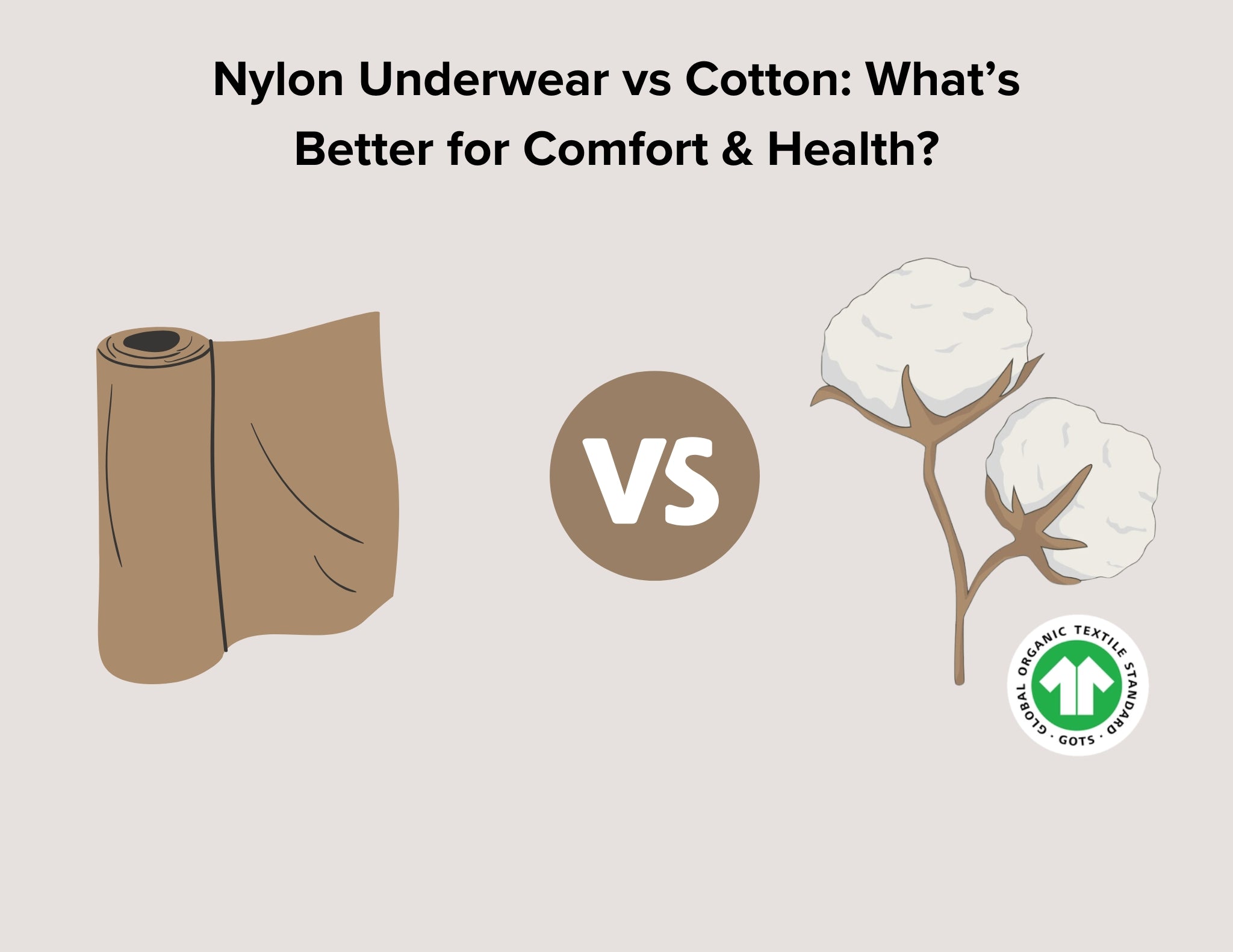
Nylon Underwear vs Cotton: What’s Better for Comfort & Health?
Underwear fabric is more than just a matter of preference—it directly impacts your daily comfort, hygiene, and overall health. While the underwear market offers different fabric options, cotton and nylon remain two of the most popular choices, each with distinct characteristics that make them suitable for different needs.
In our article, we'll explore the key differences between nylon vs. cotton underwear to help you make an informed decision about which fabric deserves space in your underwear drawer.
What Is Nylon?
Nylon is a synthetic polymer fiber created through chemical processes. First developed in the 1930s as an alternative to silk this man-made material quickly gained popularity for its remarkable strength and versatility.
In underwear manufacturing, nylon is typically blended with spandex or elastane (usually 5-20%) to create stretchy, form-fitting garments. The resulting fabric has a distinctively smooth, silky texture and is incredibly lightweight—often creating the sensation of wearing almost nothing at all.
You'll commonly find nylon in:
- Seamless underwear styles
- Athletic performance underwear
- Lingerie and decorative pieces
- Thongs and G-strings
Pros of Nylon Underwear
- Quick-drying capabilities: After washing or sweating, nylon dries significantly faster than natural fibers.
- Excellent stretch and recovery: Maintains its shape even after extended wear without sagging.
- Seamless appearance: Creates a smooth silhouette under clothing without visible panty lines.
- Lightweight feel: It is so light it often feels imperceptible when worn.
- Durability: Highly resistant to wear and tear, maintaining its quality through numerous wash cycles.
Cons of Nylon Underwear
- Limited breathability: The synthetic fibers create a barrier that doesn't allow air to circulate freely.
- Heat retention: Can trap body heat, making you feel uncomfortably warm in hot conditions.
- Potential skin irritation: Some people experience discomfort or allergic reactions to synthetic materials.
- Static cling: More prone to static electricity than natural fibers.
- Not Environmentally friendly: As a petroleum-based product, nylon contributes to microplastic pollution.
- Odor retention: Can hold onto odors more persistently than natural fibers.
What Is Organic Cotton?
Cotton is a natural fiber harvested from the cotton plant's seed pods. Organic cotton specifically is grown without synthetic pesticides, fertilizers, or genetically modified organisms—making it better for both the environment and your skin.
The difference between organic and conventional cotton is significant: organic farming practices eliminate exposure to potentially harmful chemicals that can remain in the fabric and come into contact with your most sensitive areas. Certifications also matter; unlike regular cotton, organic cotton is subject to strict certification processes to make sure that ethical and sustainable practices are taken care of. The Global Organic Textile Standard (GOTS) is a leading certifications that guarantee organic farming methods and chemical-free processing.
Cotton underwear has a distinctively soft, breathable quality that feels gentle against the skin. The natural fibers create a more textured feel compared to nylon's smoothness, with a comforting weight that many wearers prefer.
Pros of Cotton Underwear
- Excellent breathability: Allows air to circulate freely, keeping you cooler and drier.
- Natural moisture absorption: Pulls moisture away from the skin without feeling immediately wet.
- Hypoallergenic properties: Less likely to cause skin irritation or allergic reactions.
- Soft comfort: Gets increasingly softer with each wash.
- Biodegradable material: Better environmental footprint than synthetics.
- Odor resistance: Naturally inhibits the growth of odor-causing bacteria.
- Temperature regulation: Helps keep you cool in summer and warm in winter.
Cons of Cotton Underwear
- Slower drying time: Takes longer to dry after washing or sweating.
- Potential for dampness: Can feel wet when saturated with moisture.
- Shape retention issues: May stretch out or lose elasticity over time.
- Shrinkage concerns: Can shrink if not washed properly.
- Less sleek appearance: May create more visible lines under tight clothing.
- Wrinkles more easily: Doesn't maintain a perfectly smooth appearance like synthetics.
Key Differences Between Nylon and Cotton Underwear
Breathability
Organic cotton is the top pick if it comes to the best breathable materials for underwear; it is significantly more breathable than nylon. The natural fibers allow air to circulate freely around your body, which helps regulate temperature and prevent the buildup of moisture and heat.
This breathability is particularly important for underwear, as proper airflow helps maintain vaginal and genital health by preventing the warm, moist environment where bacteria and yeast thrive.
Nylon, by contrast, creates a barrier that limits airflow. This reduced breathability can lead to increased sweating and potential discomfort, especially in warm weather or during physical activity.
Moisture Control
While nylon doesn't absorb moisture like cotton does, it excels at wicking sweat away from the body and drying quickly. This makes it potentially better for high-intensity activities where you're likely to sweat heavily.
Cotton absorbs moisture readily (up to 27 times its weight), which helps keep your skin dry initially. However, once saturated, cotton can feel damp against the skin and takes longer to dry. This moisture retention can potentially create an environment where bacteria might thrive if the underwear stays damp for extended periods.
For everyday wear in moderate conditions, cotton's natural absorption usually provides sufficient moisture control while maintaining better breathability.
Comfort and Skin Sensitivity
Cotton generally wins for overall comfort, especially for those with sensitive skin. Its soft, natural fibers are less likely to cause irritation, itching, or allergic reactions. Organic cotton underwear takes this benefit further by eliminating exposure to potentially irritating pesticides and chemicals. If you’re looking for options designed specifically for delicate skin, explore our underwear collection for sensitive skin, made with gentle, certified organic materials.
Nylon can feel smooth and lightweight, but its synthetic nature may cause discomfort for some people, particularly when worn for long periods. The material can also trap heat, which might lead to increased sweating and potential skin issues like chafing or rashes.
For people with conditions like eczema, contact dermatitis, or general skin sensitivity, cotton is almost always the safer choice.
Durability and Maintenance
Nylon underwear typically outlasts cotton in terms of durability. It resists stretching, shrinking, and fading better than cotton and generally maintains its shape longer, even after numerous wash cycles.
Cotton underwear may wear out faster, especially in high-friction areas. It's also more prone to shrinking if not washed properly. However, cotton is easier to clean thoroughly and can withstand high-temperature washing, which helps eliminate bacteria more effectively.
For longevity, nylon has the edge, but for ease of care and hygiene, cotton offers advantages.
Style and Fit
Nylon allows for more diverse styling options due to its stretch and sleek appearance. It's ideal for seamless designs, thongs, and form-fitting styles that need to disappear under clothing.
The material's excellent elasticity makes it perfect for creating underwear that hugs the body without digging in or creating visible lines. This makes nylon a popular choice for wearing under tight or thin clothing.
Cotton underwear tends toward more classic, comfortable designs like briefs, hipsters, and boyshorts. While modern cotton blends have improved fit and style, it’s important to note that 100% seamless organic cotton underwear does not exist, as seamless construction requires stretch from synthetic fibers like nylon or spandex.
Why Underwear Fabric Matters More Than You Think
The fabric touching your most sensitive areas affects more than just comfort. Breathability and moisture management directly impact your genital health, potentially influencing your risk of infections and irritation.
Poor-quality underwear materials can contribute to issues like:
- Yeast infections
- Bacterial vaginosis
- Urinary tract infections
- Jock itch
- General discomfort and irritation
- Skin rashes and allergic reactions
That’s why many healthcare professionals recommend sticking to natural, breathable fabrics like cotton—especially organic cotton—for daily wear. If you’ve dealt with things like recurring yeast infections or UTIs, the type of underwear you wear could be part of the problem. You can learn more in our guides on underwear for yeast infections and underwear that helps prevent UTIs.
We also have specific collections designed with vaginal health in mind, as well as comfortable, gentle postpartum underwear for new moms. Not sure where to start? Our fabric guide breaks down what to look for based on your skin and health needs.
Explore our expert insights on the health benefits of cotton underwear, how it compares to other materials, and why it's considered a healthier choice.
Nylon Underwear vs Cotton Underwear - Which Should You Choose?
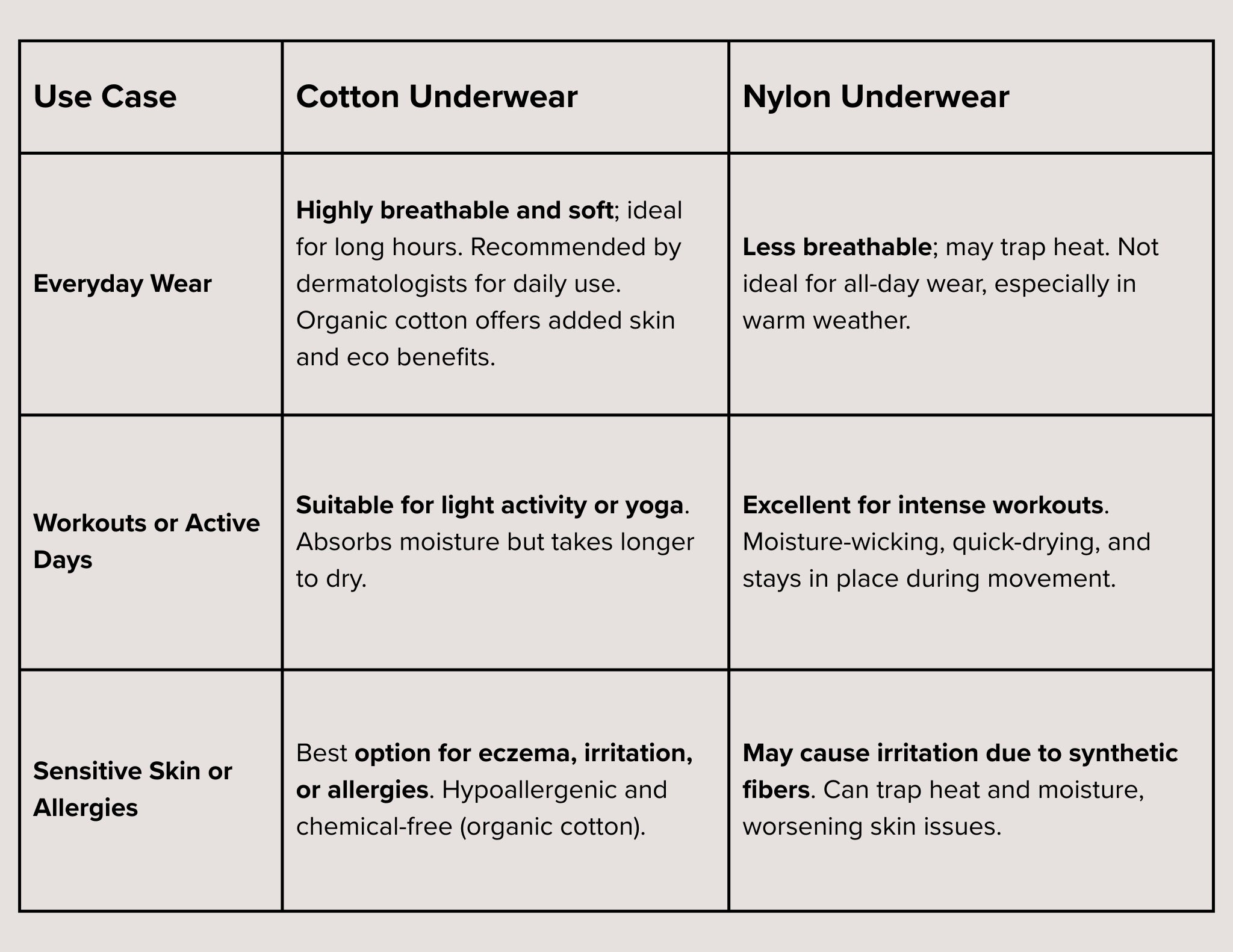
Why Cotton Wins Over Nylon
While both materials have their place, cotton underwear—particularly organic cotton—offers several advantages that make it the preferred choice for everyday underwear:
- Better for vaginal and genital health: The breathable nature of cotton helps prevent the warm, moist environment that can lead to infections or irritation.
- More comfortable for extended wear: The soft, natural fibers feel better against sensitive skin all day long.
- Environmentally friendlier: Cotton biodegrades naturally, unlike petroleum-based nylon.
- Chemical-free option: Organic cotton specifically eliminates exposure to potentially harmful pesticides and processing chemicals.
- Temperature regulation: Cotton helps keep you cooler in summer and warmer in winter through its natural breathability.
- Reduced risk of skin reactions: Less likely to cause allergic responses or irritation.
For most people in most situations, cotton provides the ideal balance of comfort, health benefits, and practicality. Explore our expert insights to learn how cotton compares to other materials and what are the health benefits of cotton underwear.
Explore our collections to find the perfect organic cotton underwear for your needs:
Common Questions Answered
Is cotton really better for your skin than nylon?
Yes. Cotton allows your skin to breathe and reduces moisture buildup that can lead to irritation or infections. Organic cotton takes this benefit further by eliminating exposure to pesticides and chemicals that might irritate sensitive skin.
Does cotton underwear last as long as nylon?
While nylon typically outlasts cotton in terms of shape retention and resistance to wear, high-quality cotton underwear can still provide excellent durability. The comfort benefits often outweigh the slightly shorter lifespan for many wearers.
Will organic cotton keep me dry?
Organic cotton absorbs moisture naturally, keeping your skin dry initially. While it doesn't dry as quickly as nylon after becoming saturated, its breathability helps prevent excessive sweating in the first place.
Can I work out in organic cotton underwear?
For light exercise or yoga, organic cotton underwear works well. For high-intensity workouts with significant sweating, you might prefer nylon or performance blends specifically designed for athletics.
Which is better, cotton or nylon underwear?
For everyday wear and skin health, cotton generally provides better overall benefits. Nylon excels in specific situations like intense workouts or when wearing form-fitting clothes that require seamless underwear.
Is nylon or cotton better?
Cotton is typically better for daily comfort, breathability, and skin health. Nylon performs better for moisture-wicking during heavy activity and creating smooth lines under clothing.
What material is best for underwear?
Organic cotton stands out as the best all-around material for underwear, offering the ideal balance of comfort, breathability, and skin health benefits for most people in everyday situations.
What are the disadvantages of nylon underwear?
The main disadvantages include limited breathability, potential skin irritation, heat retention, and environmental concerns since nylon is not biodegradable.
Does nylon cause yeast infections or irritation?
Nylon itself doesn't directly cause infections, but its poor breathability can create conditions where yeast and bacteria thrive. The trapped heat and moisture increase the risk of developing infections or experiencing irritation.
Which underwear lasts longer—cotton or nylon?
Nylon underwear typically lasts longer and maintains its shape better than cotton. However, the comfort and health benefits of cotton often outweigh this durability advantage for everyday wear.







